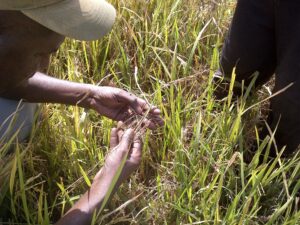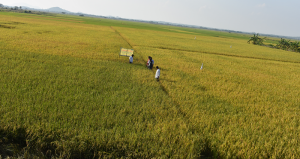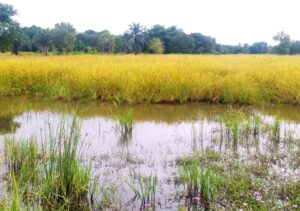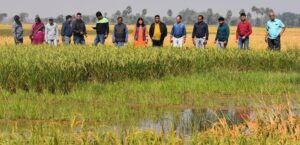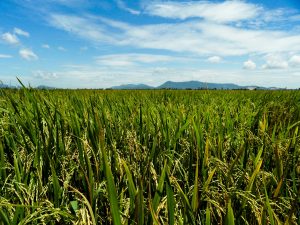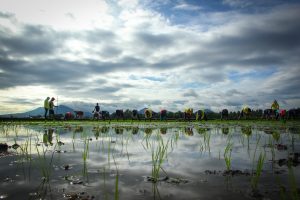
Cartograms are maps on which areas are altered to reflect the subject of interest. They accentuate patterns, making it easier to understand them. Because these maps violate most rules of cartography, we advise against their use in navigation!
Figure 1 shows cartograms of the domestic production of the three main grain crops—rice, wheat, and maize—and of root and tuber crops (including cassava, potato, sweet potato, and yams).
These maps show how rice production is concentrated in South, Southeast, and East Asia. Maize production is particularly high in North America and China, but it is relatively evenly spread across countries. Wheat is a crop of temperate and subtropical climates, including being a winter crop in northern India, but it is mostly absent in tropical countries. Root and tuber crops are relatively important in sub-Saharan Africa (particularly cassava), China (sweet potato), and Central Europe (potato).
The amounts produced in a country in part reflect the number of people living there. To some extent, that explains why China, the world’s most populous country, is a large producer of all crops mapped.
The maps of Figure 2 show cartograms of daily per person consumption of these crops.3 These maps account for the number of people in a country, but they are also influenced by international trade and the degree to which the crop is used for (direct) consumption.
Rice consumption per person in West and East Africa is higher than you would expect from the production cartograms. This is in part because of rice imports. Particularly striking is the importance of maize in Africa, Central America, and southeast Europe. It is not consumed as much in mega-producer United States. This is because, as in Asia, most maize is consumed indirectly, as it is used for animal feed and sweeteners. Some of it is used for biofuel and not consumed at all. Wheat is the prime energy source for people in North Africa, Europe, and Central Asia. Roots and tubers are a very important source of energy in Africa.
Have these maps whetted your appetite for cartograms? A very good source of other cartograms is the WorldMapper Web site at www.worldmapper.org.
_________________________________________
Dr. Hijmans is a geographer in the IRRI Social Sciences Division.

